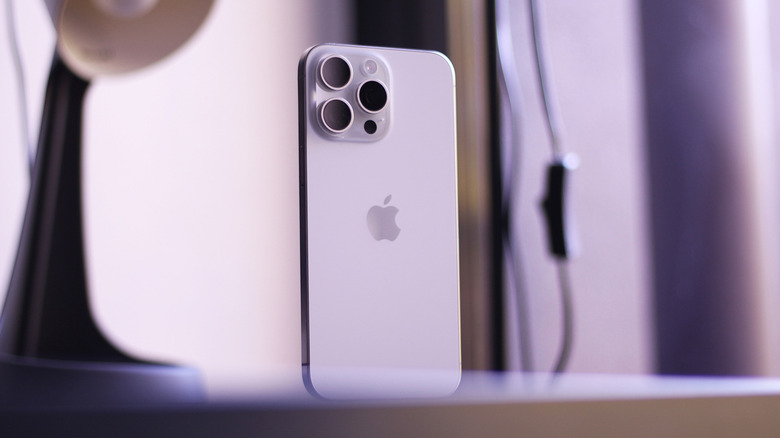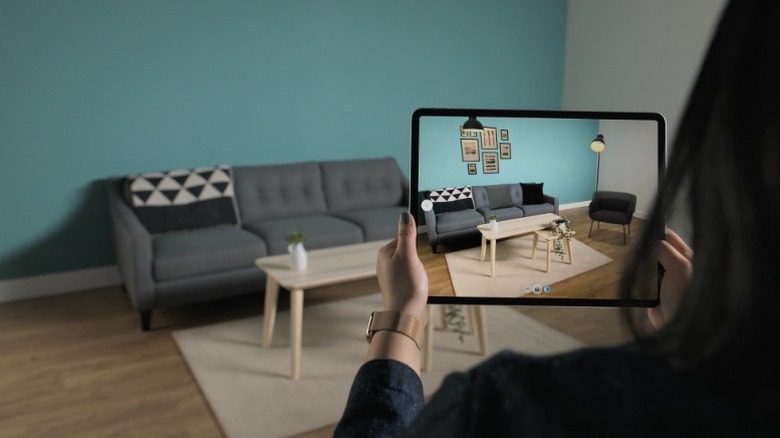Does Your iPhone Have A Black Circle Next To The Cameras? Here's What It's For
With how similar and incremental the design changes in iPhones have remained over the past several years, it's clear that Apple is largely satisfied with its intended design language. Some of the easiest phones to recognize from a mile away include the iPhone, the Samsung Galaxy S series, and the Pixel range of smartphones, and all of them have one thing in common — an iconic and distinguishable camera lens setup.
Apple has played around with the camera alignment a bit with the base model iPhones, but the Pro series has remained the same for several generations now. You have primary, ultrawide, and telephoto shooters neatly spaced out in a triangular shape, with an LED flash and two circular elements. The tiny hole next to the iPhone's camera is actually a microphone used for capturing clearer and directional audio during video recordings — but what's the bigger circle used for?
If you closely inspect it, you notice that it sits flush beneath the raised glass surface of the camera module. This black circle is actually where the LiDAR sensor is situated, a physical attribute that has been on all Pro model iPhones since 2020. LiDAR stands for Light Detection and Ranging and is a sensor that is primarily used to create 3D models of the world around you. The iPhone utilizes this to enable some very interesting and unique use cases.
How does LiDAR on iPhones work?
You may have heard of LiDAR systems being used in autonomous vehicles to map the environment, cars, and pedestrians around. LiDAR works by emitting infrared light in pulses, which then hit objects in space and travel back to the sensor. The differences in time are how the system then translates the data into 3D models of an object — it's pretty cool stuff, while the sensor cannot "see" objects, it can build accurate models by sensing the depth of the environment around.
Obviously, the range of LiDAR on iPhones and iPads is much less — Apple claims it can measure objects up to five meters away. This theoretically enables faster auto focus and better low-light camera performance. More prominent use of the LiDAR scanner on iPhones can be found through compatible apps. We tested the Measure app on an iPhone, which allows you to point your device at objects and get decently accurate measurements.
Polycam is a popular example of a third-party app that makes good use of the iPhone's LiDAR sensor and lets you create 3D models of objects in a jiffy. You can also use the app to create accurate scans of rooms and export them as 3D models that you can use in programs like Blender. We've also covered the Clips app for iPhone and iPad, and it has a handful of AR Spaces that rely on your device's LiDAR sensor to generate fancy 3D effects in real time.

